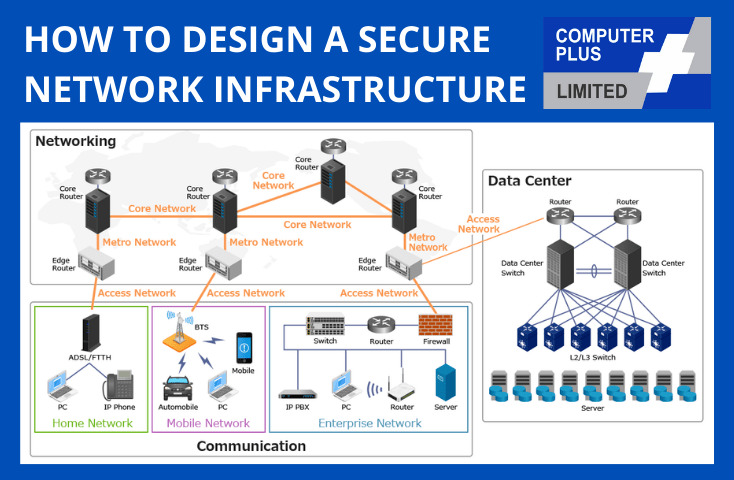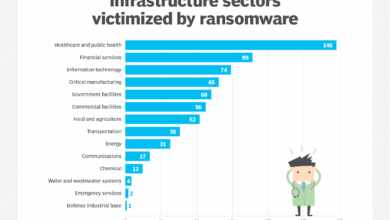
Why Governments Must Prioritize Application Security Testing
Why governments must prioritize application security testing? It’s not just about avoiding embarrassing headlines; it’s about protecting national security, citizen data, and the very fabric of public trust. In today’s digital landscape, government applications are prime targets for cyberattacks, and a single breach can have devastating consequences – financially, politically, and socially. This isn’t just a tech issue; it’s a matter of national resilience.
We’ll delve into the real-world costs of inadequate security, exploring how vulnerabilities can lead to data theft, service disruptions, and even national security threats. We’ll also examine how robust application security testing can help governments meet their legal and ethical obligations, maintain public trust, and improve the efficiency of public services. Think of it as building a fortress around our digital government, one line of code at a time.
Financial Ramifications of Inadequate Application Security

Inadequate application security is not just a technical problem; it’s a significant financial risk for governments. The costs associated with data breaches stemming from insecure applications can be crippling, impacting budgets and eroding public trust. This section explores the direct and indirect financial consequences of failing to prioritize application security testing.
Direct Costs of Data Breaches
Data breaches resulting from insecure applications lead to a cascade of direct financial losses. These include the immediate costs of incident response, such as engaging cybersecurity experts, forensic investigators, and legal counsel. There are also the expenses associated with notifying affected individuals, credit monitoring services, and potential payouts for compensation. The cost of recovering stolen data and restoring systems to operational status adds further financial strain.
For example, the 2015 Office of Personnel Management (OPM) breach, which exposed the personal data of millions of federal employees, cost the US government hundreds of millions of dollars in direct response and remediation costs.
Indirect Costs of Data Breaches
Beyond the immediate expenses, insecure applications trigger a wave of indirect financial costs. Reputational damage can significantly impact public trust, leading to reduced citizen engagement and participation in government services. This loss of trust can translate into decreased tax revenue and reduced investment in government programs. The costs associated with regulatory fines and legal settlements following a data breach can also be substantial.
The OPM breach, for instance, resulted in significant reputational damage and ongoing legal battles, adding to the overall financial burden. Furthermore, the loss of productivity during a breach and the time spent recovering from an attack represents a significant indirect cost.
Costs of Remediation, Legal Fees, and Reputational Damage
Remediation efforts following a security incident can be extensive and expensive. This involves not only fixing the vulnerabilities that led to the breach but also implementing comprehensive security measures to prevent future incidents. These measures may include upgrading security infrastructure, implementing robust access control mechanisms, and conducting regular security audits. Legal fees associated with investigations, regulatory compliance, and potential lawsuits can quickly escalate.
Reputational damage can be the most enduring and costly consequence. Loss of public trust can severely hamper a government’s ability to effectively deliver services and maintain its legitimacy.
Comparison of Preventative Costs vs. Breach Response Costs
The following table illustrates the stark contrast between the costs of proactive application security testing and the far greater expenses associated with responding to a data breach. While preventative measures require upfront investment, they are significantly less costly than dealing with the aftermath of a security incident.
| Cost Category | Preventative Application Security Testing | Responding to a Data Breach |
|---|---|---|
| Initial Investment | Moderate (e.g., software licenses, personnel costs) | Low (initially, but rapidly escalates) |
| Ongoing Costs | Moderate (e.g., regular testing, updates) | High (e.g., investigation, remediation, legal fees, compensation) |
| Reputational Impact | Minimal | Severe (loss of public trust, decreased funding) |
| Long-Term Costs | Low | Very High (ongoing legal battles, regulatory penalties) |
National Security Implications of Vulnerable Applications
Government applications, increasingly integral to national infrastructure and citizen services, represent a significant target for hostile actors. Weaknesses in these applications can have far-reaching consequences, jeopardizing national security and eroding public trust. The interconnected nature of modern systems means that a breach in one application can cascade through the entire network, causing widespread damage.The potential for exploitation of government applications by hostile actors, including state-sponsored attacks, is a serious and growing concern.
These attacks can range from sophisticated cyber intrusions aimed at stealing sensitive data to more disruptive actions designed to cripple essential services. The consequences of such attacks can be devastating, impacting everything from national defense to the delivery of essential public services like healthcare and emergency response.
Examples of Compromised Government Applications and their Impact
Compromised government applications have a history of causing significant damage. For instance, a breach in a tax agency’s system could lead to the theft of millions of taxpayer records, exposing sensitive personal and financial information to identity theft and fraud. Similarly, a successful attack on a national power grid’s control system, potentially facilitated through vulnerabilities in related software applications, could lead to widespread blackouts, impacting critical infrastructure and causing economic disruption.
In another scenario, a compromised election management system could undermine the integrity of democratic processes, eroding public trust in the government. These examples illustrate the potential for significant damage resulting from inadequate application security.
Impact of Application Vulnerabilities on National Security, Why governments must prioritize application security testing
Application vulnerabilities pose a significant threat to national security. The theft of sensitive data, such as military secrets or classified intelligence, can severely compromise national defense capabilities and provide adversaries with a strategic advantage. Disruption of critical services, such as healthcare, transportation, or emergency response systems, can have devastating consequences, potentially leading to loss of life and widespread chaos.
Beyond the direct impact on infrastructure, the loss of public trust in government institutions due to security breaches can have significant long-term consequences, undermining national stability and social cohesion. Furthermore, successful attacks can embolden future attacks, creating a cycle of escalating cyber threats.
Potential Consequences of Inadequate Application Security for National Security
The following points highlight the potential consequences of neglecting application security for national security:
The severity of these consequences necessitates a proactive and comprehensive approach to application security testing within government agencies.
- Theft of sensitive data, including classified information and personal data of citizens.
- Disruption of critical national infrastructure, including power grids, transportation systems, and communication networks.
- Loss of public trust in government institutions and a decline in social cohesion.
- Escalation of cyber warfare and increased vulnerability to future attacks.
- Economic damage resulting from service disruptions and data breaches.
- Compromise of national defense capabilities and strategic advantage to adversaries.
- Potential for physical harm and loss of life due to disruption of essential services.
Protecting Citizen Data and Privacy
Governments hold vast amounts of sensitive citizen data, making robust application security paramount. Failure to adequately protect this information not only violates citizens’ trust but also exposes them to significant risks, including identity theft, financial fraud, and discrimination. The legal and ethical responsibilities are clear: governments must act as responsible stewards of this data.
Legal and Ethical Obligations Regarding Citizen Data Protection
Governments have a fundamental ethical obligation to protect citizen data. This stems from the inherent right to privacy and the need to maintain public trust. Legally, this obligation is codified in various national and international laws and regulations. These frameworks often mandate specific security measures and impose penalties for non-compliance. For example, the General Data Protection Regulation (GDPR) in Europe and the California Consumer Privacy Act (CCPA) in the US establish stringent requirements for data handling, including consent, transparency, and data breach notification.
These laws emphasize the importance of data minimization, purpose limitation, and accountability, all of which influence application security design and testing. The failure to uphold these legal and ethical standards can lead to significant fines, reputational damage, and erosion of public confidence.
Comparison of Data Protection Regulations and Their Impact on Application Security
Different data protection regulations vary in their specific requirements, impacting the application security measures needed for compliance. The GDPR, for example, focuses heavily on data subject rights and accountability, necessitating robust mechanisms for data access, rectification, and erasure. The CCPA, on the other hand, emphasizes consumer control over their personal information and the right to opt-out of data sales.
These differing priorities necessitate tailored application security strategies. For instance, applications handling personal data under the GDPR require more rigorous access controls and data encryption than those operating solely under less stringent regional regulations. A robust application security testing program must be adaptable and comprehensive enough to address the nuances of different regulatory landscapes.
Robust Application Security Testing and Data Privacy Compliance
Robust application security testing is crucial for achieving and maintaining compliance with data privacy regulations. By proactively identifying and mitigating vulnerabilities, governments can prevent data breaches and protect citizen data from unauthorized access, use, or disclosure. Regular security testing, including penetration testing, static and dynamic application security testing (SAST and DAST), and software composition analysis (SCA), helps to ensure that applications are designed and built with security best practices in mind.
These tests identify weaknesses such as SQL injection flaws, cross-site scripting (XSS) vulnerabilities, and insecure authentication mechanisms, all of which could lead to data breaches. Furthermore, comprehensive security testing allows governments to demonstrate compliance to regulators, reducing the risk of penalties and legal action.
Comparison of Application Security Testing Methodologies
Different application security testing methodologies offer varying levels of effectiveness in protecting citizen data. The choice of methodology depends on factors such as the application’s complexity, development lifecycle, and budget.
| Methodology | Description | Strengths | Weaknesses |
|---|---|---|---|
| Static Application Security Testing (SAST) | Analyzes source code without executing the application. | Early detection of vulnerabilities, cost-effective for early stages. | May produce false positives, misses runtime vulnerabilities. |
| Dynamic Application Security Testing (DAST) | Tests the running application to identify vulnerabilities. | Identifies runtime vulnerabilities, less prone to false positives. | More expensive, requires a running application. |
| Interactive Application Security Testing (IAST) | Combines SAST and DAST, providing real-time feedback during development. | Comprehensive coverage, faster remediation. | Requires specialized tools and expertise. |
| Software Composition Analysis (SCA) | Analyzes open-source components for known vulnerabilities. | Identifies vulnerabilities in third-party libraries. | Requires accurate component identification. |
Maintaining Public Trust and Confidence

In today’s digital age, public trust in government is paramount. This trust is significantly impacted by the security of government online services. Successful application security testing is not just a technical necessity; it’s a crucial component in building and maintaining that vital public confidence. When citizens feel their data is safe and government systems are robust, their faith in the government’s ability to serve them effectively increases.Successful application security testing directly contributes to building and maintaining public trust by minimizing the risk of data breaches and service disruptions.
By proactively identifying and mitigating vulnerabilities, governments demonstrate a commitment to protecting citizen information and ensuring the reliable delivery of essential services. This proactive approach, rather than a reactive one following a breach, fosters a sense of security and responsibility that resonates with the public.
Transparency in Application Security Measures Improves Public Confidence
Openness about the measures a government takes to secure its applications is key to building public trust. For example, publishing regular reports on security assessments, vulnerability disclosures, and remediation efforts demonstrates accountability and transparency. This proactive communication allows citizens to understand the efforts being made to protect their data and builds confidence in the government’s commitment to security.
Imagine a government website that clearly states its security protocols, including the types of testing performed, the frequency of audits, and the steps taken to respond to vulnerabilities. This transparency is far more reassuring than silence or a lack of information.
Reputational Damage from Data Breaches Caused by Insecure Applications
The reputational damage from a data breach caused by insecure applications can be devastating. Loss of public trust, negative media coverage, and potential legal repercussions can severely impact a government’s ability to function effectively. Consider the impact of a breach exposing sensitive personal information like social security numbers or medical records. The resulting loss of confidence can extend far beyond the immediate victims of the breach, eroding public trust in the entire government system.
The financial costs, including legal fees, regulatory fines, and the cost of restoring public confidence, can also be substantial, as seen in numerous real-world examples, such as the 2015 Office of Personnel Management breach which cost millions and significantly damaged public trust.
Strategies for Communicating About Application Security Measures to the Public
Effective communication is vital for fostering public trust in government application security. A multi-pronged approach is necessary.
- Publish regular security reports: These reports should clearly Artikel the security measures in place, the results of security assessments, and any vulnerabilities discovered and addressed.
- Use plain language: Avoid technical jargon and explain security measures in a way that is easily understood by the general public.
- Engage with the public: Use social media, town halls, and other forums to answer questions and address concerns about application security.
- Be proactive: Communicate about security incidents promptly and transparently, even if it involves admitting mistakes. This honesty builds more trust than attempting to cover up problems.
- Highlight successes: Showcase instances where robust application security prevented a breach or mitigated a potential threat. This demonstrates the effectiveness of the measures in place.
Improving Government Efficiency and Effectiveness
Secure applications are the backbone of efficient and effective government operations. When government systems function smoothly and reliably, citizens benefit from quicker service delivery, reduced bureaucracy, and improved overall quality of life. Conversely, insecure applications can create significant bottlenecks, leading to wasted resources and a diminished public image.Insecure applications directly impact government efficiency and effectiveness. Consider the cost of downtime caused by a security breach: lost productivity, the expense of remediation, the potential for legal action, and the erosion of public trust all contribute to a significant financial burden.
This goes beyond simple monetary loss; it translates into delays in vital services, such as processing benefit claims, issuing permits, or responding to citizen inquiries. Imagine a tax filing system brought down by a cyberattack – the resulting backlog and citizen frustration would be substantial.
Delays, Disruptions, and Increased Operational Costs Caused by Insecure Applications
The impact of insecure applications on government operations is multifaceted. A single vulnerability exploited by malicious actors can trigger a cascade of problems. For example, a compromised database could lead to data leaks, requiring costly forensic investigations, notification of affected citizens, and implementation of new security measures. This disruption not only affects the immediate service but also impacts related services that rely on the compromised system.
The time spent investigating the breach, restoring data, and improving security protocols directly translates into lost productivity and increased operational costs. Furthermore, the reputational damage caused by a significant security incident can be long-lasting and costly to repair. The City of Atlanta’s 2018 ransomware attack, which crippled numerous city services, serves as a stark example of the potential consequences.
The cost of recovery, including system restoration, cybersecurity enhancements, and legal fees, ran into millions of dollars, impacting various city services for months.
Application Security Testing and the Reliability and Availability of Government Services
Application security testing plays a critical role in preventing these disruptions. By proactively identifying and mitigating vulnerabilities before deployment, governments can significantly improve the reliability and availability of their online services. Regular penetration testing, code analysis, and security assessments help ensure that applications are resilient against attacks and capable of handling high volumes of traffic without compromising performance.
This proactive approach is far more cost-effective than reacting to breaches after they occur. Investing in robust application security testing is an investment in the smooth and uninterrupted delivery of essential government services. The return on this investment is evident in reduced downtime, improved citizen satisfaction, and a more secure and efficient government.
Visual Representation: Secure Applications and Improved Government Performance
Imagine a flowchart. The first box represents “Government Services” (e.g., tax filing, benefit applications, permit processing). An arrow leads to a second box labeled “Application Security Testing.” A second arrow emerges from this box leading to a third box labeled “Secure Applications.” From this third box, several arrows branch out, each pointing to positive outcomes: “Improved Citizen Satisfaction,” “Reduced Operational Costs,” “Increased Efficiency,” “Enhanced Public Trust,” and “Stronger National Security.” A dotted line, representing insecure applications, leads from the “Government Services” box to a box labeled “Security Breach,” with arrows pointing to negative outcomes such as “Data Breaches,” “Service Disruptions,” “Financial Losses,” and “Reputational Damage.” This visual clearly illustrates how application security testing is integral to achieving improved government performance and avoiding the significant negative consequences of insecure applications.
The Role of Application Security Testing in Risk Management
Application security testing is no longer a luxury for government agencies; it’s a critical component of a robust risk management strategy. In today’s interconnected world, where government services increasingly rely on software applications, neglecting application security exposes citizens, national interests, and financial resources to significant threats. A comprehensive risk management framework must inherently incorporate a strong application security testing program to effectively identify and mitigate vulnerabilities before they can be exploited.Application security testing provides a systematic approach to identifying and addressing security flaws within government applications.
By integrating these tests into the software development lifecycle (SDLC), agencies can proactively reduce their attack surface and minimize the potential for costly breaches and reputational damage. This proactive approach is far more cost-effective than reacting to vulnerabilities after they’ve been discovered by malicious actors.
Application Security Testing Methodologies
Several methodologies exist for testing application security, each with its strengths and weaknesses. The choice of methodology often depends on factors such as the application’s complexity, the development stage, and the available resources. A multi-layered approach, combining various testing types, generally provides the most comprehensive security assessment.
- Static Application Security Testing (SAST): SAST analyzes the application’s source code without actually executing it. This allows for the detection of vulnerabilities early in the development process, even before the application is fully functional. Examples of vulnerabilities SAST can detect include SQL injection flaws, cross-site scripting (XSS) vulnerabilities, and insecure use of cryptographic libraries.
- Dynamic Application Security Testing (DAST): DAST involves testing the running application by simulating attacks to identify vulnerabilities in the application’s runtime behavior. This method complements SAST by finding vulnerabilities that might be missed by static analysis. DAST tools can identify vulnerabilities such as insecure authentication mechanisms, buffer overflows, and cross-site request forgery (CSRF) flaws.
- Interactive Application Security Testing (IAST): IAST combines the benefits of SAST and DAST by instrumenting the application during runtime. This provides real-time feedback on vulnerabilities as they are being exploited, allowing developers to quickly address them. IAST is particularly useful for identifying vulnerabilities that are difficult to detect using SAST or DAST alone.
- Software Composition Analysis (SCA): SCA focuses on identifying vulnerabilities within third-party libraries and open-source components used in the application. Given the prevalence of open-source components in modern software, SCA is crucial for ensuring that the application doesn’t inherit vulnerabilities from its dependencies. This helps mitigate risks associated with outdated or insecure components.
Integrating Application Security Testing into the SDLC
Integrating application security testing into the SDLC is paramount for effective risk management. By embedding security testing throughout the development process, rather than treating it as an afterthought, agencies can significantly reduce the cost and effort required to address vulnerabilities. Early detection and remediation of vulnerabilities minimizes the impact of potential security breaches.This integration can involve various stages, from early design reviews and code analysis to penetration testing and security audits before deployment.
Regular security assessments throughout the application lifecycle help ensure that new vulnerabilities are identified and addressed promptly. Automated security testing tools can be incorporated into the CI/CD pipeline to streamline the process and ensure that security testing is performed consistently.
Application Security Testing Process Flowchart
The following flowchart illustrates a typical application security testing process:[Imagine a flowchart here. The flowchart would start with “Requirements Gathering,” followed by “Design Review,” then “Development (including SAST),” then “Testing (including DAST and IAST),” then “Penetration Testing,” then “Vulnerability Remediation,” then “Deployment,” and finally “Ongoing Monitoring and Maintenance.” Each stage would have arrows indicating the flow of the process.] This iterative process ensures continuous improvement in application security.
Closing Summary
Ultimately, prioritizing application security testing isn’t just a good idea – it’s a necessity. The potential consequences of failing to protect government systems are too severe to ignore. By investing in robust security measures, governments can safeguard sensitive data, maintain public trust, and ensure the continued effective operation of essential services. It’s an investment in the future, an investment in the security and well-being of the nation.
Frequently Asked Questions: Why Governments Must Prioritize Application Security Testing
What types of application security testing are most effective for government applications?
A multi-layered approach is best, combining static and dynamic analysis, penetration testing, and vulnerability scanning. The specific mix depends on the application’s criticality and complexity.
How can governments ensure their application security testing programs are effective?
Regular testing, continuous monitoring, and a well-defined security policy are crucial. Independent audits and employee training also play a vital role.
What are the long-term benefits of investing in application security testing?
Beyond immediate cost savings from avoided breaches, long-term benefits include enhanced public trust, improved efficiency of government services, and stronger national security.
How can governments balance security with the need for agile development practices?
Integrating security testing early and often in the software development lifecycle (SDLC) is key. This allows for faster identification and remediation of vulnerabilities.





